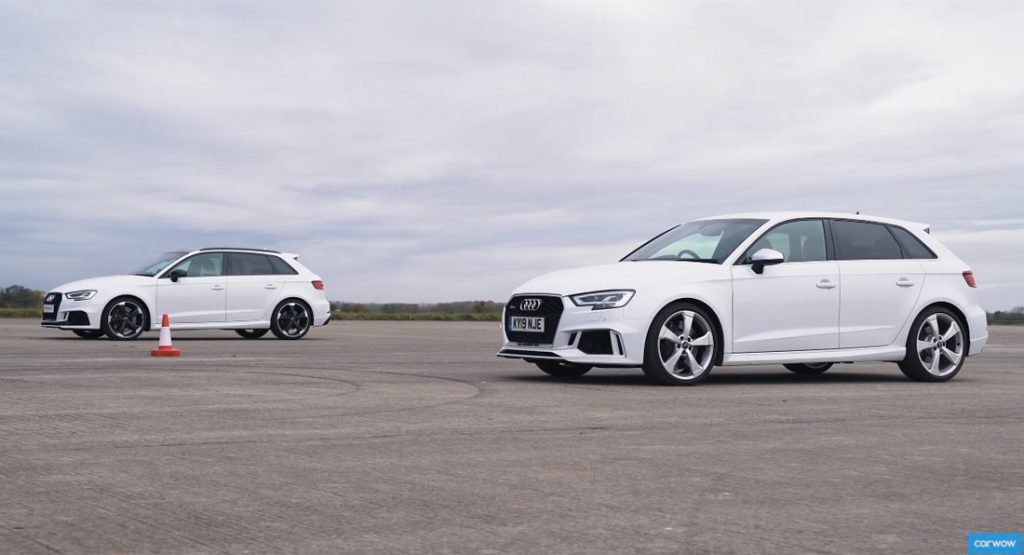As emissions regulations become increasingly more strict, it could seem as though performance cars, particularly those in Europe, aren’t quite as potent as they once were. In a recent test aimed at seeing if this holds true, CarWow pitted a 2017 Audi RS3 against the most recent 2019 RS3.
In order to pass emissions tests under the Worldwide Harmonized Light Vehicles Test Procedure (WLTP) in Europe, car manufacturers have been forced to fit vehicles with particulate filters. On paper, the addition to the 2019 RS3 doesn’t seem to reduce power, as just like the 2017 model, its 2.5-liter five-cylinder turbocharged engine pumps out the same exact figures: 400 hp and 354 lb-ft (480 Nm) of torque.
Speed Delivered In Very Different Ways: Audi RS3 And Seat Leon Cupra R ST ABT Take On The Mercedes-AMG G63
CarWow started out its tests through a series of head-to-head drag races featuring the pair. Across the races, the duo were very evenly matched. Next, a handful of rolling drag races were done and the 2017 model seemed to have a decent power advantage at the top end.
After strapping the cars to a dyno and performing a series of power runs, it was concluded that the pre-WLTP car has a touch more torque lower in the rev range than the 2019 model. Interestingly, the 2019 model has more torque in the mid-range while the older car has a slightly less dramatic fall off in power after reaching peak torque. It’s likely that the presence of the particulate filter in the new car restricts the engine’s ability to breathe just enough to give the older car a slight advantage.
Would you notice the difference in the real world? We doubt it.



